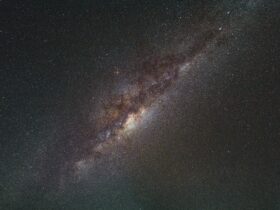The discovery of an ancient Maya city, nestled in the dense jungles of southeastern Mexico, is the stuff of adventure novels. But this story didn’t start with an Indiana Jones-type character hacking through vines with a machete. Nope, this one began on the 16th page of a Google search! Yes, the discovery of the long-lost city of Valeriana wasn’t the result of a well-funded expedition; it was an accidental breakthrough by a sleepless PhD student browsing old data. Grab a coffee and let’s dive into this jaw-dropping tale of academic curiosity meeting ancient mystery.
Stumbling onto a Lost City
Luke Auld-Thomas, a PhD student at Tulane University, was knee-deep in digital pages of archived surveys when he found a nugget that changed everything. In the wee hours, after too many Google searches to count, he spotted an old Lidar survey buried in data—an environmental scan by a Mexican organization. Now, Lidar (Light Detection and Ranging) isn’t your typical tourist-friendly tech; it’s a laser survey system that shoots beams down from planes, piercing through vegetation to reveal what lies beneath. When Auld-Thomas applied his archaeological knowledge to this dusty dataset, he saw what countless others had missed: an ancient city sprawling across the landscape. And it wasn’t just any city—it was a bustling Maya hub, brimming with history and hidden stories.
Valeriana: A Forgotten Maya Metropolis
Named “Valeriana” after a nearby lagoon, this city was anything but small. At its peak, between 750 and 850 AD, it likely housed up to 50,000 people—more than the current population in that part of Mexico! Archaeologists have unearthed features that indicate Valeriana was a thriving capital, including towering pyramid temples, residential districts, and amphitheaters that would’ve hosted ritual ballgames, ancient Maya style. The city covers around 16.6 square kilometers, and researchers found two main centers with large ceremonial buildings about 2 kilometers apart, connected by networks of roads and thousands of buildings. Imagine the hustle and bustle of life here centuries ago, with people worshiping in the plazas, trading in markets, and gathering around ball courts to cheer on players.
So Close, Yet So Hidden
Here’s the kicker: this sprawling city was hiding in plain sight, just a 15-minute hike from a major road near the town of Xpujil, where Maya descendants live today. This isn’t your remote jungle treasure but rather a massive metropolis concealed by nature, its remains masked by the thick foliage. No one knew it was there—at least not officially. Locals had long suspected something under the mounds dotting the area, but they couldn’t be sure without formal exploration. Lidar technology confirmed these suspicions, shining a laser light on Valeriana’s buried wonders and giving archaeologists their “aha!” moment.
Climate, Drought, and the End of a Civilization
But what happened to this grand city? Why did it vanish? The answer lies in a harsh reality that still resonates today: climate change. The Maya civilization flourished in a densely populated region where resources were stretched to the limit. When severe drought hit around 800 AD, it threw their society into turmoil. With limited options for food and water, people began to abandon their homes, dispersing in search of survival. The bustling metropolis of Valeriana, like many other Maya cities, fell silent as its people left, eventually becoming one with the jungle. Fast forward to the 16th century, and the Spanish conquest finished off whatever remnants of the Maya city-states remained.
Lidar: The Modern Treasure Map
Lidar has revolutionized archaeology, especially in areas like the Yucatán Peninsula, where dense jungles hide structures from the naked eye. Instead of archaeologists inching along, examining every square foot, planes equipped with Lidar can map massive areas in hours. Professor Marcello Canuto, co-author of the research, has watched this transformation with excitement. In the past decade alone, Lidar has enabled the discovery of more ancient Maya sites than archaeologists had managed to uncover in a century of hard, foot-slogging work.
A New Era of Discovery
Valeriana’s discovery hints at a treasure trove of ancient cities waiting beneath the jungle canopy. There’s an almost overwhelming amount of territory still to explore. Auld-Thomas jokes about the irony of this technological gold rush, saying, “One of the downsides of discovering lots of new Maya cities in the era of Lidar is that there are more of them than we can ever hope to study.” Despite Valeriana’s proximity to modern civilization, it remains untouched, holding secrets archaeologists can only dream of uncovering. Auld-Thomas himself isn’t sure when he’ll get to make the journey, but he says, “I’ve got to go to Valeriana at some point. It’s so close to the road, how could you not?”
This discovery isn’t just about ancient ruins; it’s a peek into the resilience and complexity of Maya civilization. Valeriana stands as proof that the jungle wasn’t a place where “civilizations went to die,” as Western narratives often suggest. Instead, it was a place where societies thrived, adapting to challenges we’re still grappling with today. And thanks to tech breakthroughs like Lidar, it’s clear that the ancient world has many more surprises waiting for those with enough curiosity—and persistence—to go looking.












Leave a Reply